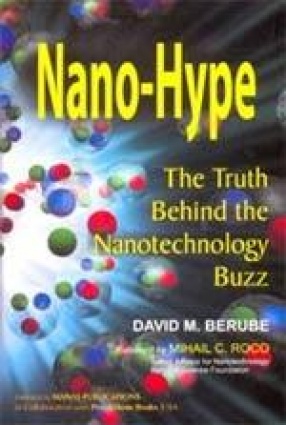A Handful of decades ago, everything was micro. That was followed by the dot-com craze. Today, it’s nano-this and nano-that. A nanometer is one-billionth of a meter, and it takes about three to ten atoms to span t6he length of a nanometer. However, the prefix nano has been attached to dozens of worlds, all of which carry a host of different meanings. Truth be told, chemists have been working on the nanoscale from the working on the nanoscale from the beginning. In the last decade we have heard about scaling machines down to the nanoscale, an unfortunate image since these machines, while remarkably efficient on the macroscale, are highly problematic on the nanoscale. We hear about biochemists protein engineers discussing nature as a superior analogy since nanoscale construction is what nature does (and very well.) We hear about directed assembly as electron-microscopists push molecules around, producing nanograffiti and small works of art. We hear about ezxperts in biotechnology using self-assembly to get pieces to build themselves into bigger things, serving as the building blocks of new machines. As nano-Hyope shows, there’s a lot of money to be made in nanotech, and enthusiastic advocates as well as those loudly oppose get the most attention, Attention gets researchers their grants, universities their budgets, and business their investors. Extraordinary exaggeration –“hepeâ€- surrounds all things nano And antinano. The claims and counterclaims are everywhere. The public and the private sectors needs a guide to help them understand this nanotech buzz for what it is rather than what it claims to be, especially when there is some evidence to suggest that environmental safety and human health may be at risk. Nano-Hype builds a narrative based on an extensive, if not exhaustive, review of the literature. Dr. Berube breaks down the cacophony of voices composing the buzz about nano to provide the reader with the tools needed to look realistically at the many claims, both positive and negative, about what government, science, commerce, and others have achieved and can achieve using nanotechology. Finally, he builds a case for rational vigilance when confronted with press releases and reports that ask us to surrender our roles as thoughtful citizens and consumers. We all need to ask. Is there such a thing as nanotechnology, or is it mostly nanoscience at work: For that matter, what is nanoscience anayway? Who is telling the truth about nanoscience? Scientist trying to get grants? Neo-Luddites afraid of the uncertainties inherent in any new technology? Industry raising venture capital†Private and public interest groups advancing their own agendas? Should we believe the prophets of doom who promote stories about omnivorous nanomachines and nanoparticles that will work their way into the environment? Are nanoparticles carcinogenic? Are they toxic? Nano-Hype sets the record straight. It’s our world; let’s see what this nano-thing is all about, what some people are up to, and what roles we should play in this “revolution.â€
Nano-Hype: The Truth Behind the Nanotechnology Buzz
In stock
Free & Quick Delivery Worldwide
reviews
Bibliographic information
Title
Nano-Hype: The Truth Behind the Nanotechnology Buzz
Author
Edition
1st ed.
Publisher
ISBN
8170493099
Length
521p., Figures; Notes; Bibliography; Index; 25cm.
Subjects





There are no reviews yet.